Hungarian Wind Music
By Tim Reynish - written for WASBE in 2002 Revised 22nd May 2012 With additional material by Laszlo Marosi
22nd May 2012 was the twentieth anniversary of the death of Ranki Gyorgy, or Gyorgy Ranki as I will refer to him, (reversing Hungarian tradition of surname before given name) and so it was a convenient time to start to rewrite my article of 2002 in which I looked briefly at Hungarian Wind Music.

The political domination of much of 19th century central Europe by the Habsburg monarchy resulted in strong Germanic influences in all aspects of the arts, but also in a healthy nationalist reaction, especially in Hungary and Czechoslovakia. The verbunkos and czardas were part of the lingua franca for all Hungarian composers, including Liszt and Dohnanyi, and the field was ripe for Kodály and Bartók to begin their systematic collections of folk material at the start of the 20th century. This new folk influence led to experiments in tonality and a greater freedom from the diatonic systems of Germany and Austria; composers of the early twentieth century turned to France rather than Germany for their models.
THE INFLUENCE OF KODÁLY
Whereas Bartok and many other leading composers moved away from Hungary, Kodaly remained, and during the twenties and thirties did much to found a nationalist school of music as a professor at the Budapest Academy. In an interview with Bruce Duffie, Gyorgy Ranki said of studies with Kodaly:
Far from any dogmatism, Kodály has given freedom to his pupils to improve their own personal style. He used to say “Plants can only grow in their own roots.” He was an unforgettable master, composer and scientist.
During his six decades of teaching, Kodály’s composition students included many future great musicians, including Antal Doráti, Zoltán Székely, Mátyás Seiber, Géza Fried, Ödön Pártos, Tibor Serly, Sándor Veress, Pál Kadosa, Pál Járdányi, Lajos Bárdos, Ferenc Szabó, István Szelényi and Georg Solti – but, as Bence Szabolcsi (famed musicologist, also a Kodály pupil) said at Kodály’s funeral, “all of Hungary was his pupil”. Earlier Bartók, who refused to teach composition, said: “Kodály is the greatest teacher of composition that Hungary has ever had.”
GYORGY RANKI (1907-1992)

I have always enjoyed the music of Gyorgy Ranki; I think his Tales of Father Goose for solo Tenor Trombone and Wind Band is one of those rare works, combining really funny music with the beautiful, (similar works for trombone and band are Schuller’s Eine Kleine Posaunemusik, or Gorb’s Downtown Diversions – all three works emphasise the lyrical and amusing sides of the trombone, rather the banal, noisy and crude). It exists in two versions, one with wind band accompaniment and a second for Brass Septet, and it really does deserve to be better known. Another chamber wind work worth exploring is Pentaerophonia, three pieces for wind quintet in which he experiments with the sounds of the gamelan; I would love to look at a score of Burlesque for flute, oboe, pairs of clarinets and bassoons, 3 horns, trumpet and trombone, and Quo Vadis for Narrator, 23 solo winds and choreography.
Ránki (30 October 1907 – 22 May 1992) graduated from the Academy of Music, between 1926 and 1930 he was a student of Zoltán Kodály. Later he studied folk music in the Museum of Ethnography, in 1948-1949 he visited Paris and London to deepen his knowledge. He composed in different genres from oratories to ballets, from symphonies and concertos to film scores.
For wind band there are two orchestral suites. The Magic Potion is a charming four movement work with an especially beautiful third movement, Euphory, and a French finale. Suite no 2 from King Pomade is one of the very rare arrangements which I perform; it as close as to Stravinsky's Petrouchka as any wind work in its joyous fusing of folk elements and all three movements are full of superb tunes. The story is based on the tale written by Hans Christian Andersen. The Emperor's New Clothes is about two weavers who promise an Emperor, who cares for nothing but his wardrobe, a new suit of clothes that are invisible to those stupid or unfit for their positions. The Emperor cannot see the cloth himself, but pretends that he can for fear of appearing incompetent for his position. When the swindlers report that the suit is finished, they dress him in mime and the Emperor then marches in procession before his subjects. During the parade a child cries out, "But he isn't wearing anything at all!", and the he cry is taken up by others. The Hungarian libretto, however, directs the focus on the social background, the satirical description of the courtly pride, and adulterous paternity becomes the expose of the hypocrisy, still preserves the naive charm of the story that are equally echoed in the purity of the traditional Hungarian folk melodies as well as the grotesque cynicism of Ránki’s music.
As with so many of his Hungarian colleagues, his greatest influence was the folk-inspired music of Bartók and Kodály; he also greatly admired Stravinsky, Prokofiev and Ravel. Much of his music is for theatre or film; folk elements are ever-present in his music, sometimes pastiche, since there is usually an underlying sense of humour. I shall never forget his coming in Budapest to a final rehearsal, in his late eighties, of the Hungarian premiere of Tales of Father Goose with the magnificent Hungarian Army Wind Orchestra, straight off a plane from Beijing, no sign of jet-lag, energetically contributing to the discussion, extremely demanding over detail, and after the evening concert he was the last to leave the reception.
My colleague Marosi comments that...regarding Ránki: his connection to winds all are originating from Erno Keil. Keil was the favorite bass-trombonist of Richard Strauss - he actually played almost all instruments on a professional level. He performed the premier of King Pomade and he made the band version. Ránki did NOT know about it. When I programmed it for a student military band conductor diploma concert, I invited Ránki, this is when he heard about it first. Later came Tales of Father Goose and so on.......Keil also made an arrangement of Ránki's Sword Dance, an attractive piece for band. Its unpublished.
KAMILLO LENDVAY (born 1928)
The first Hungarian work for wind which I really noticed was by Kamillo Lendvay, his brilliant Concertino for Piano, Winds and Harp of 1959. In 2013 Lendvay will reach the milestone age of 80, and so we should re-assess his position in contemporary wind music and programme some of his music. He was born in Budapest on 28th December, 1928, and after studies at the Liszt Academy he began his career as conductor, music coach and director of the choir at the Szeged Opera. He has written in all forms including television opera, and this feel for the dramatic infuses his wind music.
- RECORDED ON Hungaraton Classics HCD 31787
- Concertino for Piano, Winds, Percussion and Harp (1959) 10 minutes
- Concerto for Trumpet and Wind Symphony Orchestra (1991) 13 minutes
The Concertino was written on a commission from Hungarian Radio and has become one of Lendvay's most performed works internationally. The language is that of his contemporaries Bártók and Kodály, that energetic folk-based lingua franca of Hungarian music which so suits the piano, a synthesis of Eastern European melodic, harmonic and rhythmic influences with Western musical thought. I had forgotten until revisiting this recording and excellent performance by Gloria Lanni with the Budapest Symphony Orchestra and Janos Sandor, what a really excellent piece this is; Concertino is a misnomer, since the all three movements, while concise, are wonderfully organised and developed. The finale I am sure, if played on a "blind" test to most musicians, would be identified as by Bartok. A link to a Youtube performance given by the excellent Cincinnati Conservatoire of Music Wind Symphony conducted by Rodney Winther can be reached by the link below:
CONCERTINO FOR PIANO, WINDS, PERCUSSION AND HARP
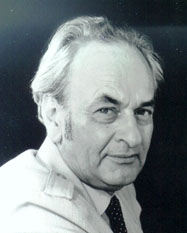
The Concerto for Trumpet and Wind Symphony Orchestra was premiered at WASBE Manchester in 1991 by Martin Winter with the Berkshire Youth Wind Orchestra under Robert Roscoe, and is the result of a commission by the publishers EMB for WASBE. The first movement Senza Sordino began life as a commission from the International Trumpet Guild as a set work for a young artists competition, but Lendvay seamlessly adds touches of orchestral colour in the background to the opening improvisations, and then rhythmic interjections punctuate a moto perpetuo. The second movement also has cadenza passages while the third, modestly entitled "Rondo in Modo Classico", has tremendous energy and verve and is far from the pastiche that the title implies. There is a fine recording of the WASBE Ireland performance by the Irish Youth Wind Ensemble and Mark O’Keefe on 7211-MCD.
A work recorded on the disc Hungaraton Classics HCD 31612 mentioned below is The Last Message from Maestro Tchaikovsky. Beginning with the premise that Tchaikovsky’s works lend themselves superbly to transcription for wind orchestra, Lendvay has written a work in a contemporary idiom but with fingerprints from the great composer throughout. He immediately launches into an extensive, often jazzy, introduction of great energy, a prelude to a moving all-too-short slow section of great beauty. The third section is an ironic march which might be by Prokofiev followed by a final peroration and a pithy coda.
In 2003, the Symphonic Band of Kiskunfélegháza started their concert with Lendvay’s Festival Overture, a work commissioned by the lamented Festliche Musiktage, Uster and premiered in 1985. This is a useful opening overture of a little over eight minutes, recorded on 4735-MCD.
Lendvay’s Wind Symphony was premiered at the 6th Hungarian and East-Central European Wind Orchestra Symposium at the University of Szeged Congress Centre on 16th April 2010, played by the University of Szeged Department of Music Wind Orchestra under the direction of József Csikota. Leon Bly wrote in WASBE World: Although this is music steeped in the musical developments of the 20th Century, its inspiration and thus its accessibility to audiences is reflected in the titles of the movements – 1. Invocation of the Muse, 2. Sunrise in Copacabana, 3. The Iguazu Falls, and 4. Rio Carnival.
Other works for wind:
| Story-Telling Dance (1952) | 6.30 | EMB |
| Little Suite (1958) (no saxophones) | 10.00 | Axa Music, Pecs |
| Three Carnival Masks (1960) | 7/8 minutes | EMB |
| Festival Overture (1985) | 9.00 | EMB |
| A Last Message from Maestro Tschaikovski | 12.00 | Axa |
| Second Suite for Wind | 18.00 | Axa |
Editio Musica Budapest
Universal Music Publishing Editio Musica Budapest Ltd
Victor Hugo utca 11-15
H-1132 Budapest
Hungary
E-mail: info@emb.hu
Axa Music Pécs, axa 1006
Telephone +36 - 72 315 529
Email kozpont@direct.hu.or
Hungarian Music Quarterly
With so many major figures in Hungary now in their seventh or eighth decade, it is high time that we woke up to the fact that they have written a great deal of idiomatic and very attractive music. It is surprising that not more of it is played world-wide. In a review of Hungarian Composers in Hungarian Music Quarterly paid tribute to several whose work has contributed largely to the wind world. The writer Peter Halasz is dismissive of "The Fifites", suggesting that "a light and harmonious Hungarian style was required, and following this dogma quite a number of serenades and oratorio works of little artistic value were written. Formally, a strong conservatism can be observed". This conservatism permeates a great deal of Hungarian wind band music of the past five decades, music which is a pale reflection of the folk-inspired style of Zoltan Kodaly; however, at its best, here is a vital and attractive repertoire.
The Sixties
In the his commentary on the Sixties, Halasz lists several composers whose music for wind is becoming increasingly well known:
- • Kamillo Lendvay b 1928
- • Janos Descenyi b 1927
- • Istvan Lang b 1933
- • Zsolt Durko 1934-1997
- • Sandor Balassa b 1935
Sadly, much of their wind music is for chamber groups or for solo wind, though there is a fine Concertino for Xylophone by Istvan Lang. Incidentally, there is also the one movement of the Bártók Concerto No 1 for Piano and orchestra, written for wind accompaniment only, and able to stand on its own as a concert item, rather like the Tippett Mosaic, the first movement of his Concerto for Orchestra.
About those engaged in writing music for wind band, Halasz writes:
"The music of ISTVAN LANG is both colourful and intellectually conceived. He is one of the rare composers who remained faithful to the technical experiments of the avant-garde from the 60's on. Like Lang, KAMILLO LENDVAY also has great experience in the theatre. His music is full of wit and natural expression. FRIGYES HIDAS is a prominent writer of incidental music whose virtuoso works for the concert hall, especially his internationally popular brass music, shows a light touch... not far from these composers we can locate JANOS DESCENYI, whose music employs calculation as an important element."
I can find nothing about Janos Descenyi apart from references to a CD of choral music and a Concertino for Violin; however, one movement of his Scenes from the Hungarian Age of Chivalry was played at the Boston WASBE Conference in 1989, making far more sense when I conducted the whole suite of four movements in Budapest, in a new arrangement by Laszlo Marosi with soprano solo.
FRIGYES HIDAS (1928 – 2007)
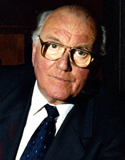
Undoubtedly the most successful composer of wind band music in Hungary of the last fifty years is Frigyes Hidas, with a career embracing administrative posts at the National Theatre and the Operetta Theatre in Budapest. There is an ease and fluency about his music which brings to mind the compositional style perhaps of Gordon Jacob, occasionally the wit and sophistication of Joseph Horovitz, the mastery of effective scoring of Alfred Reed, but every so often there is a touch of Angst and an edge which adds a piquancy often lacking in much of his music.
There is a CD from 1996 of the Budapest Symphonic Band, conducted by Laszlo Marosi, playing five of his works, all published by Stormworks and Ben Cruining.
- The Magic Potion 96002-2 published by Band Music Centre
- Capriccio 4.11
- Sprightly Tunes 8.14
- Circus Suite 15.02
- Tuba Concerto 10.26
- The Undanced Ballet 18.01
- Stormworks Europe
- PO Box 134, 7470
- AC, GOOR
- The Netherlands
- info@stormworkseurope.com
- Kliment
- Kolingasse 15
- 1090 Vienna
- Tel +43 1 317 5147
- FAUST MVT 1 - MARCH
- FAUST MVT 2 – PAS DE DEUX
- FAUST MVT 3 – APHRODITE’S FAREWELL
- FAUST MVT 4 – THE PUB SCENE
- Kamillo Lendvay The Last Message from Maestro Tchaikovsky (1994)
- Istvan Bogar Concerto for Tuba
- Frigyes Hidas Folksongs of the Balaton
- Frigyes Hidas Folksongs of the Békés Country
- György Ránki Tales of Father Goose
- Lásló Dubrovay Buzzing-Polka
- György Ránki The Magic Potion
Here the idiom is international without any hint of his Hungarian background, very pleasant light music, for me without any strong personality . The Wind Repertory Project, run by Nikk Pilato, carries a brief biography:
Frigyes Hidas studied composition at the Budapest Academy of Music with Janos Viski and conducting with Laszlo Somogyi. He worked in theatres as a conductor and musical director and also as conductor of the choir of St Stephen’s Basilica, Budapest. From 1979 onwards he did not undertake full-time employment but devoted himself exclusively to composition.
He composed in a musical language that was always easily approachable but never undemanding, with great professional erudition. He liked to make use of the Baroque concerto form, and in the rhythms of his instrumental works the inspiration of jazz can often be found. He composed in every genre, opera, ballet, oratorio, a mass, two requiems, a symphony, numerous concertos, chamber and solo pieces, film music, and above all chamber music for brass instruments and works for wind ensemble and concert band – the latter made his name known and respected world wind.
His Concerto Semplice for clarinet and orchestra or wind band is typical of his music - charming – I think of the Finzi Bagatelles for Clarinet and Piano while listening.
Somehow the rather sentimental style at which I balk is more suited to the movement for solo cello and wind ensemble; there is real passion from time to time and this is a work worth considering alongside Luis Serrano Alarcón’s Tramonto.
Perhaps his best known work is the Requiem for Four Soloists, Chorus and Wind Band. An excerpt from the Lachrymosa performed by the Saratov Governor Choir with the Volga Band conducted by Anatoly Selyanin with soloist Liubov Belotserkovskay will give a clear idea of the attraction of his music, rooted as it is in traditional melodic and harmonic procedures.
Writing this article took me back to the WASBE Conference of 1999 in San Luis Obispo, and a performance of his Concerto for Symphonic Band in a concert by the Young People’s Symphonic Band of North Rhine-Westphalia 3141-MCD, as with all of his music superbly scored, grateful to play and to listen to. His Concerto for Bassoon is recorded on Klavier K 11128 by the North Texas Wind Symphony; the slow movement has real pathos, and the outer movements are very attractive fun. The Folk Songs of the Balaton and Folk Songs of the Bekes Country naturally have a strong folk idiom in their arrangements, and I find them more interesting and possible for programming where some dances are needed. Coriolanus played at WASBE Sweden by Kiskunfelegyhaza on CD 4735-MCD is also stronger and well worth considering, while Song of the Sea has many advocates. There is a welcome lack of pretension in his music, and if you are seeking a work which your band will enjoy playing and your audience listening to, which does not present too many problems, it will be well worth searching through the catalogue of Stormworks and scanning Youtube for a piece by Hidas.
Laszlo Marosi wrote in May 2012: Regarding Hidas he was the most productive Hungarian composer especially for winds. His Merry Music is the most popular Hungarian work in USA. His Euphoniada - concerto for euphonium with wind band – is beloved by euphonium soloists. His late work Pictures of South-Africa has beautifully descriptive movements. Also his Almost B-A-C-H and Fantasy and Fuge demonstrate his church organist background. Kliment published the latest mentioned pieces, together with third horn concerto with band, very attractive, Richard Strauss concerto nr 2 level music. We just did the Hungarian premier in this March. Flute concerto nr 2 and Oboe concerto are very popular all over the world.
The Seventies
One of the most interesting and often amusing composers to emerge in the latter part of the century is Laszlo Dubrovay (b 1943) who "imbibed the experimental spirit of the sixties. A former student of Stockhausen, who like the Austrian Schwertsig rebelled against that composer’s dogmatic methods, he has become interested in music as an abstract phenomenon, as his instrumental and electronic compositions clearly show. Now Dubrovay has also begun to turn back to tradition, aiming at the revitalisation of Hungarian idiom.
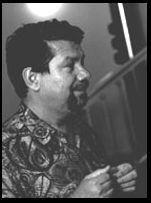
His Ballet Suite for Wind Orchestra (Mark Custom CD 4735-MCD) is a four movement work, the outer movements March, which might have been penned by Shostakovich at his most bitter, and Finale/The Pub still full of irony and wit, with two very beautiful central slow movements. Here are links to the YouTube performances by the Bela Bartok Wind Orchestra.
The Little Suite was written in 2005, prompted by the composer's determination that young members of junior, music school and conservatoire wind ensembles should not be limited to transcriptions for lack of original compositions, especially contemporary ones. The new devices used in the Little Suite are suitable for student players to try out. Indeed, they enjoy them - for instance, purring or whistling into the instrument. Each of the three-or-four-minute movements of this four-movement work can also be performed separately. The titles of the movements are the following: 1. In cheerful mood, 2. Song, 3. Joke, 4. March. This music in modern idiom, full of interesting new effects, offers young players an opportunity for enjoyable music-making together, and at the same time prepares them for playing more difficult contemporary works.
A typical work of Dubrovay is the Buzzing Polka recorded on Hungaraton Classics HCD 31612; in less than four hectic minutes, Dubrovay explores weird effects, lip buzzing, half valves, singing through the instrument. This is available from Stormworks email info@stormworkseurope
9569-MCD is the CD number for a disc from the WASBE Taiwan Conference set, a repertoire session by the United States Coast Guard Band in which for me by far the most interesting work was Spring Symphony by Dubrovay. This Symphony no 6 dates from the spring of 2009. It is dedicated to the conductor Károly Neumayer and his orchestra, the Pécs Railway Workers' Concert Wind Ensemble.
About the work, the composer writes: This three-movement composition follows the classical traditions, but the first movement further develops the Scriabin-type sonata form, combining two fast movements. In contrast to the lyricism of the second movement a subterranean, negative force also makes its presence felt but in a dramatic conflict is overcome by the massive, inspired communal singing of the lyrical material, which becomes chorale-like as it emanates from the modal scales. The third movement is a cheerful, dance-like scherzo, with comical, humorous sound-effects.
Two movements were played, at Taiwan, the second and third. The slow movement begins with a simple enough chorale theme with hints of melodies from Kodaly enriched with Messiaen-like harmonies. This builds into a shattering climax with the full ensemble, before dying away, climbing higher and higher in the woodwind registers. In my review I wrote: the second movement has some magical harmonic progressions, the last could be a zany score for one of those crazy French knockabout farces, crude but really funny.
A tiny snapshot of this repertoire can be gleaned from a recording from Hungaraton
Hungaraton Classics HCD 31612
It was disappointing to learn the news that the next WASBE Conference will sadly not be held in Hungary in 2013. However, I hope that this article might stimulate interest in the wonderful repertoire which has emerged in the past half century. For more information, please contact the publishers or three conductors who have done so much to perform and record these works.
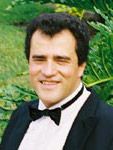
Laszlo Marosi, Florida State University, email Laszlo.marosi@ucf.edu

Jozsef Csikota, University of Szeged, email csikota@vnet.hu
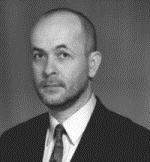
Karoly Neumayer,University of Pecs, email: neumayerkaroly@gmail.com
Pecs Hungarian State Railways Concert Band

-
Interpreting Specific Works